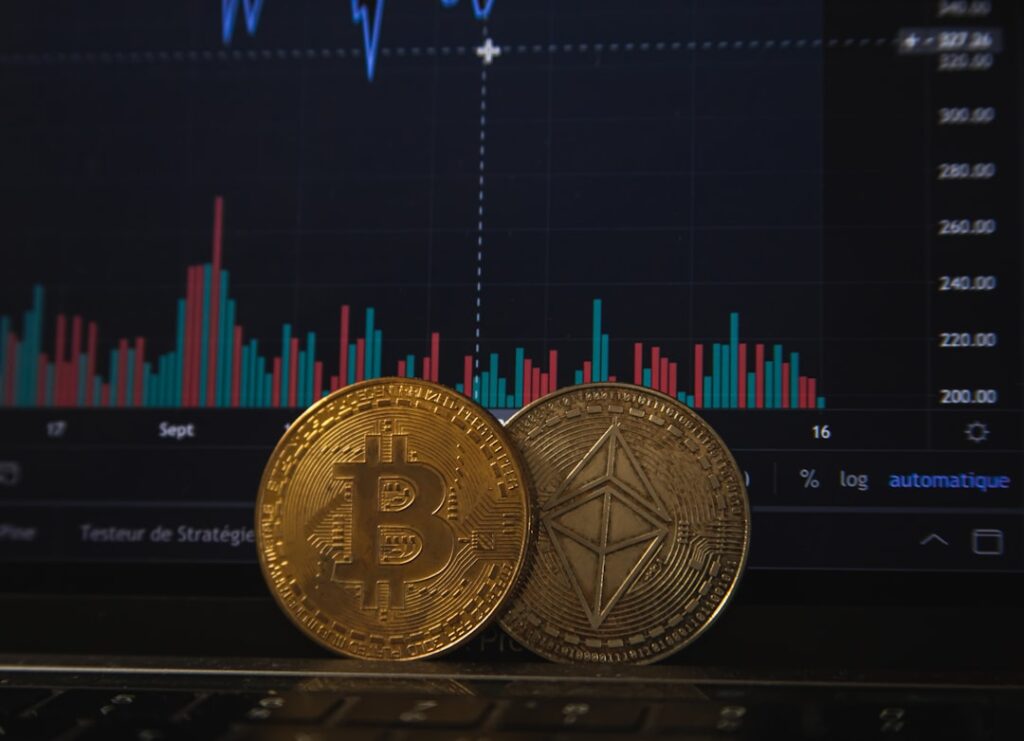The Bitcoin halving is an event that occurs approximately every four years and has significant implications for the Bitcoin network and its users. It is a process that reduces the block reward for miners by half, resulting in a decrease in the rate at which new Bitcoins are created. This event is of great importance to investors and traders as it can have a significant impact on the price and market activity of Bitcoin. Understanding the halving and its implications is crucial for anyone involved in the cryptocurrency market.
Understanding the Bitcoin Halving: What is it and Why Does it Matter?
The Bitcoin halving is a mechanism built into the Bitcoin protocol that reduces the block reward for miners by half approximately every four years. This means that the number of new Bitcoins created with each block mined is cut in half. The purpose of this mechanism is to control the inflation rate of Bitcoin and ensure that the supply of new coins entering the market decreases over time.
This reduction in the rate at which new Bitcoins are created is significant for several reasons. First, it helps maintain scarcity and value in the Bitcoin network. By decreasing the supply of new coins, it creates a sense of scarcity, which can drive up demand and ultimately increase the price of Bitcoin. Second, it incentivizes miners to continue securing the network even as the block reward decreases. Miners are rewarded with newly minted Bitcoins for their work in validating transactions and adding them to the blockchain. The halving ensures that miners are still rewarded for their efforts, albeit at a reduced rate.
In comparison to traditional fiat currency inflation, where central banks can print more money at will, the Bitcoin halving provides a predictable and transparent mechanism for controlling inflation. The halving occurs at regular intervals and is programmed into the Bitcoin protocol, making it a known event that can be anticipated by market participants.
The History of Bitcoin Halvings: A Look Back at Previous Events
Since its inception in 2009, Bitcoin has undergone two halving events. The first halving occurred in November 2012, when the block reward was reduced from 50 Bitcoins to 25 Bitcoins. The second halving took place in July 2016, reducing the block reward from 25 Bitcoins to 12.5 Bitcoins. These halvings have had a significant impact on the price and market activity of Bitcoin.
In the months leading up to the first halving, there was a noticeable increase in the price of Bitcoin. This can be attributed to the anticipation of reduced supply and increased demand. After the halving, the price continued to rise steadily, reaching new all-time highs in the following years.
The second halving had a similar effect on the price of Bitcoin. In the months leading up to the event, there was a significant increase in price as investors and traders anticipated reduced supply. After the halving, the price continued to rise, eventually reaching new all-time highs in late 2017.
The upcoming 2020 halving is expected to have a similar impact on the price and market activity of Bitcoin. However, it is important to note that past performance is not indicative of future results, and there are many factors that can influence the price of Bitcoin.
How the Bitcoin Halving Impacts Mining Rewards and the Crypto Market
The Bitcoin halving has a direct impact on mining rewards, as it reduces the number of new Bitcoins created with each block mined. This means that miners will receive fewer rewards for their work in securing the network and validating transactions. However, it is important to note that mining rewards also include transaction fees, which can vary depending on network activity.
The reduction in mining rewards can have several implications for the crypto market and trading activity. First, it can lead to increased competition among miners as they seek to maintain profitability despite reduced rewards. This can result in more efficient mining operations and increased investment in mining hardware.
Second, the halving can lead to a decrease in the supply of new Bitcoins entering the market. This reduction in supply, combined with increased demand, can drive up the price of Bitcoin. This has been observed in previous halvings, where the price of Bitcoin increased significantly in the months following the event.
It is important to note that the impact of the halving on the crypto market and trading activity is not limited to Bitcoin. Other cryptocurrencies, known as altcoins, are often influenced by Bitcoin’s price movements. Therefore, any significant changes in the price of Bitcoin resulting from the halving can have a ripple effect on the broader cryptocurrency market.
The Potential Effects of the 2020 Bitcoin Halving on Bitcoin and Altcoins
The upcoming 2020 Bitcoin halving has generated a lot of speculation and debate about its potential effects on Bitcoin’s price and market activity. There are several potential scenarios that could play out post-halving.
One scenario is that the halving could lead to a significant increase in the price of Bitcoin. This is based on the idea that reduced supply and increased demand will drive up prices. In this scenario, investors and traders who hold Bitcoin could see significant gains in their portfolios.
Another scenario is that the halving could lead to increased volatility in the price of Bitcoin. This is based on the idea that uncertainty surrounding the event could result in large price swings as market participants try to anticipate its impact. In this scenario, traders may have more opportunities for short-term gains but also face increased risk.
It is also possible that the halving could have a limited impact on Bitcoin’s price and market activity. This could occur if market participants have already priced in the event and its potential effects. In this scenario, there may be little change in the price of Bitcoin immediately following the halving.
As for altcoins, they are often influenced by Bitcoin’s price movements. Therefore, any significant changes in the price of Bitcoin resulting from the halving could have a ripple effect on the broader cryptocurrency market. Altcoins may experience increased volatility and price swings as traders react to changes in Bitcoin’s price.
Experts’ Predictions on the Future of Bitcoin Post-Halving

There are many experts in the cryptocurrency industry who have made predictions about the impact of the halving on Bitcoin’s price and market activity. These predictions range from conservative to bullish, with some experts forecasting significant increases in price and others expecting more modest gains.
It is important to note that past expert predictions have not always been accurate. The cryptocurrency market is highly volatile and unpredictable, and there are many factors that can influence the price of Bitcoin. Therefore, it is always wise to take expert predictions with a grain of salt and conduct your own research before making investment decisions.
That being said, it is worth considering the current market sentiment and trends when evaluating expert predictions. There is a general sense of optimism surrounding the upcoming halving, with many investors and traders expecting it to have a positive impact on Bitcoin’s price and market activity. This sentiment is reflected in the recent increase in the price of Bitcoin leading up to the event.
The Role of Bitcoin Halving in Bitcoin’s Inflation Control Mechanism
One of the key benefits of the Bitcoin halving is its role in controlling the inflation rate of Bitcoin. Unlike traditional fiat currencies, where central banks can print more money at will, the supply of new Bitcoins is limited by the halving mechanism.
The halving ensures that the rate at which new Bitcoins are created decreases over time. This helps maintain scarcity and value in the Bitcoin network, as there will only ever be a finite number of Bitcoins in existence. It also provides a predictable and transparent mechanism for controlling inflation, as market participants can anticipate when and how much new supply will enter the market.
However, there are also drawbacks to this inflation control mechanism. The reduction in mining rewards can make it less profitable for miners to secure the network, especially if the price of Bitcoin does not increase significantly. This could potentially lead to a decrease in mining activity and a less secure network.
Additionally, the halving can create a sense of scarcity and FOMO (fear of missing out) among investors and traders, which can lead to speculative bubbles and increased price volatility. This can be seen in previous halvings, where the price of Bitcoin increased significantly in the months following the event.
How the Bitcoin Halving Affects Bitcoin’s Price Volatility
The Bitcoin halving has a direct impact on Bitcoin’s price volatility. The reduction in mining rewards can create a sense of scarcity and FOMO among investors and traders, which can lead to increased price volatility.
In the months leading up to the halving, there is often increased speculation and trading activity as market participants try to anticipate its impact. This can result in large price swings as traders buy and sell Bitcoin based on their expectations of future price movements.
After the halving, there is often a period of increased volatility as market participants react to changes in supply and demand dynamics. This can result in large price swings as traders adjust their positions and try to take advantage of short-term opportunities.
Traders and investors can use this information to their advantage by carefully monitoring market trends and adjusting their strategies accordingly. For example, some traders may choose to take a more conservative approach and wait for the dust to settle before making any significant moves. Others may see increased volatility as an opportunity for short-term gains and adjust their trading strategies accordingly.
It is important to note that the relationship between the halving and Bitcoin’s price volatility is complex and influenced by many factors. Therefore, it is always wise to conduct your own research and consult with a financial advisor before making any investment decisions.
The Impact of the Bitcoin Halving on Bitcoin’s Adoption and Global Acceptance
The Bitcoin halving can have a significant impact on Bitcoin’s adoption and global acceptance. The reduction in the rate at which new Bitcoins are created can create a sense of scarcity and value, which can drive up demand for Bitcoin.
Increased demand for Bitcoin can lead to increased adoption as more individuals and businesses start using it as a medium of exchange or store of value. This can result in increased liquidity and market depth, making Bitcoin more attractive to investors and traders.
However, there are also potential drawbacks to the halving’s impact on adoption. The reduction in mining rewards can make it less profitable for miners to secure the network, which could potentially lead to a decrease in mining activity and a less secure network. This could undermine confidence in Bitcoin and hinder its adoption as a global currency.
Additionally, increased price volatility resulting from the halving can make it more difficult for individuals and businesses to use Bitcoin for everyday transactions. If the price of Bitcoin is constantly changing, it can be challenging to determine its value in relation to other currencies or goods and services.
Overall, the impact of the halving on Bitcoin’s adoption and global acceptance is complex and influenced by many factors. It is important to carefully consider these factors when evaluating the potential benefits and drawbacks of the halving for Bitcoin’s future.
The Significance of the Bitcoin Halving for Miners and Mining Pools
The Bitcoin halving has significant implications for miners and mining pools. The reduction in mining rewards means that miners will receive fewer rewards for their work in securing the network and validating transactions.
This can have several implications for miners. First, it can lead to increased competition among miners as they seek to maintain profitability despite reduced rewards. This can result in more efficient mining operations and increased investment in mining hardware.
Second, the halving can lead to a decrease in the profitability of mining. If the price of Bitcoin does not increase significantly after the halving, it may no longer be profitable for some miners to continue mining. This could result in a decrease in mining activity and a less secure network.
Mining pools, which are groups of miners who work together to increase their chances of earning rewards, can also be affected by the halving. If the profitability of mining decreases, some miners may choose to leave mining pools and mine independently. This could result in a decrease in the size and influence of mining pools.
Overall, the halving can have a significant impact on miners and mining pools. It is important for miners to carefully consider the potential implications of the halving for their profitability and adjust their strategies accordingly.
The Implications of the Bitcoin Halving for the Future of Cryptocurrency and Blockchain Technology
The Bitcoin halving has significant implications for the future of cryptocurrency and blockchain technology. It is a mechanism that helps control inflation and maintain scarcity in the Bitcoin network, which are key features that differentiate it from traditional fiat currencies.
The halving also provides a predictable and transparent mechanism for controlling inflation, as market participants can anticipate when and how much new supply will enter the market. This can help build trust and confidence in Bitcoin as a store of value and medium of exchange.
Additionally, the halving can drive innovation in cryptocurrency and blockchain technology. As miners face reduced rewards, they may be incentivized to find more efficient ways to secure the network and validate transactions. This could lead to advancements in mining hardware and software, as well as improvements in scalability and transaction speed.
Furthermore, the halving can have a ripple effect on the broader cryptocurrency market. Altcoins are often influenced by Bitcoin’s price movements, so any significant changes in the price of Bitcoin resulting from the halving could impact the development and adoption of other cryptocurrencies.
Overall, the halving has far-reaching implications for the future of cryptocurrency and blockchain technology. It is an event that should be closely monitored by anyone involved in the industry.
The Bitcoin halving is a significant event that occurs approximately every four years and has far-reaching implications for the Bitcoin network and its users. It is a mechanism that helps control inflation and maintain scarcity in the Bitcoin network, which are key features that differentiate it from traditional fiat currencies.
Understanding the halving and its implications is crucial for investors, traders, and anyone involved in the cryptocurrency market. It can have a significant impact on the price and market activity of Bitcoin, as well as the development and adoption of other cryptocurrencies.
While there are many factors that can influence the price of Bitcoin and the broader cryptocurrency market, the halving is an event that should not be overlooked. By carefully monitoring market trends and conducting thorough research, investors and traders can position themselves to take advantage of potential opportunities resulting from the halving.
In conclusion, the Bitcoin halving is a significant event that has implications for the entire cryptocurrency industry. It is an event that should be closely monitored by anyone involved in the market, as it can have a significant impact on price, market activity, adoption, and innovation. By understanding the halving and its implications, investors and traders can make informed decisions and position themselves for potential opportunities in the future.
If you’re interested in the world of cryptocurrency and want to stay updated on the latest developments, you might also find this article on Synthetic News intriguing. It explores the concept of accounting transfer from Wave Apps, a popular accounting software. While it may seem unrelated to Bitcoin Halving at first glance, understanding how accounting transfers work can provide valuable insights into the financial aspects of cryptocurrencies. Check out the article here to expand your knowledge in this fascinating field.




